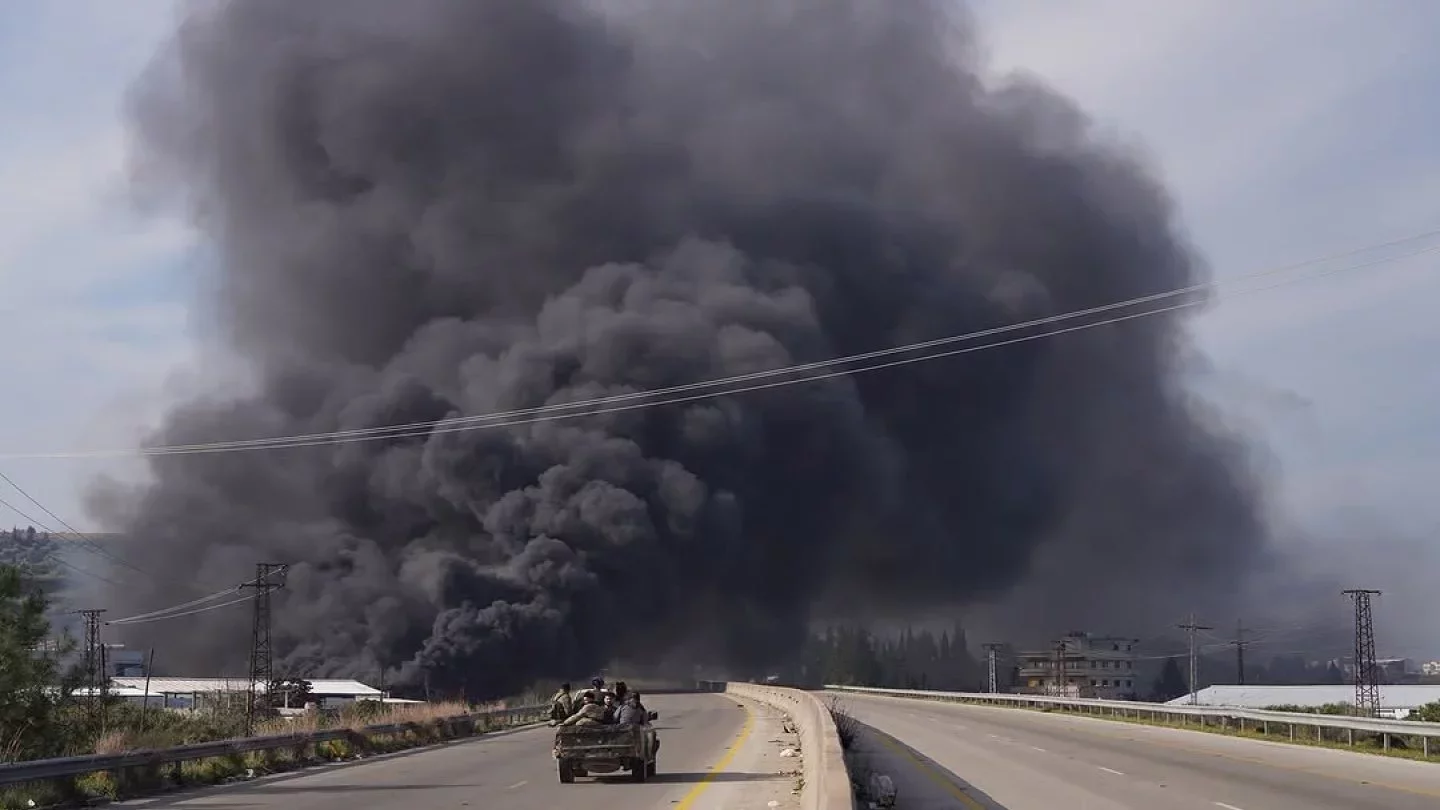Escalation in Latakia and Tartus: Armed Clashes and Executions Reported
 Photo: instagram.com/karamalmasri22
Photo: instagram.com/karamalmasri22
The conflict in Syria’s Latakia and Tartus provinces has escalated dramatically following an ambush by pro-Assad gunmen on a government security patrol near Latakia, Orda reports.
This attack sparked the deadliest violence since the fall of the Assad regime, with over 1,000 people killed in a span of four days.
According to the Syrian Observatory for Human Rights (SOHR), the casualties include 745 civilians, 125 security personnel, and 148 pro-Assad fighters.
At the same time, The Syrian Network for Human Rights (SNHR) has documented at least 803 deaths, including 39 children and 49 women, from March 6 to March 10, 2025. The casualties are attributed to two main groups.
1. Non-State Armed Groups Linked to the Former Regime:
- 172 security, police, and military personnel (including Internal Security Forces and Ministry of Defense members) were killed in ambushes, direct attacks, and clashes during military operations
- 211 civilians, including a humanitarian worker, were shot and killed by non-state armed groups
2. Armed Forces Engaged in Military Operations:
- These include undisciplined factions and officially recognized defense ministry forces operating in areas outside the former regime’s control.
- 420 civilians and disarmed militants, including 39 children, 49 women, and 27 medical personnel, were killed during a large-scale security and military campaign.
Fatalities by governorate:
- Latakia: 185 deaths (15 children, 11 women, 2 medical personnel)
- Hama: 53 deaths (15 children, 10 women, 1 medical personnel)
- Tartous: 179 deaths (9 children, 28 women, 24 medical personnel)
- Homs: 3 deaths
The violence has been particularly severe in Alawite-majority areas, where reports of targeted executions have emerged. Armed groups reportedly identified and killed Alawite civilians in revenge attacks, leaving bodies in streets and homes.
Serious clashes erupted in Latakia and Tartus, strongholds of the Alawite minority to which former President Bashar al-Assad belongs. Security forces responded with heavy reinforcements, including armored vehicles, to regain control.
The unrest was exacerbated by tensions between Alawite residents and the new government, with some local communities voicing concerns over mass arrests and security raids. The primary trigger for the current wave of violence is believed to be the armed attack by Assad loyalists.
In some areas, pro-government forces and anti-Assad militants reportedly executed civilians based on sectarian affiliations. Reports indicate that in multiple villages, men over the age of 18 were summarily killed, houses were looted and set on fire, and bodies were left unburied in the streets.
A resident of Baniyas told AP that armed groups checked identification documents and executed those identified as Alawites. SOHR director Rami Abdurrahman described the violence as “the largest massacre in the entire Syrian conflict.”
Syrian President Ahmed al-Sharaa condemned the violence and blamed “remnants of the old regime” for inciting a sectarian war. He announced an independent commission to investigate the events and vowed that those responsible for the killings would be brought to justice.
Government sources report that security forces have begun stabilizing the situation, regaining control over key areas, and conducting clearance operations in the mountainous regions where thousands of pro-Assad insurgents are believed to be hiding.
International observers have warned that if the violence is not contained, Syria risks plunging into a deeper sectarian conflict.
The United Nations, the United States, and Russia have called for an urgent Security Council meeting. At the same time, UN Human Rights Chief Volker Türk has urged an immediate investigation into the killings.
Former President Bashar al-Assad, who fled Syria in late 2024 after the Islamist group Hayat Tahrir al-Sham (HTS) ousted him, remains in Russia under political asylum. The new Syrian government has formally requested his extradition, while Russia is negotiating with Damascus over the future of its military bases in the region.
The major military operation against Assad loyalist insurgents in Syria's Latakia and Tartus provinces has concluded. The situation remains volatile. The government continues to implement security measures to address any residual insurgent activity and prevent further unrest in the region.
Original Author: Ruslan Loginov
This article has been updated.
Latest news
- Citizen of Kazakhstan Fined in Russia After Forcing Anti-War Message on St. Petersburg Radio
- Criminal Case Opened Against KazTAG Leadership
- East Kazakhstan Transport Department Head Resigns Amid Corruption Probe After Bridge Collapse
- Toqayev Meets EEC Chair Sagintayev Ahead of Upcoming Eurasian Summit
- Apple and Google Warn of State-Backed Cyberattacks Targeting Users in 150+ Countries
- Kazakhstan: FMA Uncovers Illegal Online Casino Scheme
- Kazakhstan Exporters Sound Alarm as KTZ Imposes Over 20 Rail Transport Bans
- Lawyer: House Arrest Prevents Orda.kz Head Bazhkenova from Defending Herself in Court
- KTZ, Uzbekistan Railways Expand Grain Transit Amid Border Congestion
- Shymkent Military Court Sentences Fuel Depot Chief to Nine Years in Prison
- Let’s Install a Thousand Towers! How Environmentalists Propose to Clean Almaty’s Air
- Armenia Releases Former “Golos” Coordinator Wanted Under Russia’s Foreign-Agent Law
- Kadyrov Calls Russian Strikes “Response” to Grozny City Complex; MoD Makes No Direct Mention
- Kazakhstan Seeks Solutions to Ease Pressure on Uzbek Terminals Amid Export Surge
- Georgia’s Security Service Says No Evidence of “Kamit” After BBC Report
- Kadyrov Confirms Drone Damage to Grozny City
- Russia Temporarily Blocks Kazakhstan's Grain Transit, Threatening Flax Exports to Europe
- Assets of Businessman Dulat Kozhamzharov Seized Following Halyk Bank Claim
- Georgian Opposition Calls December 6 March Over Alleged Use of Chemicals at 2024 Protests
- Severe Smog Covers Oskemen

